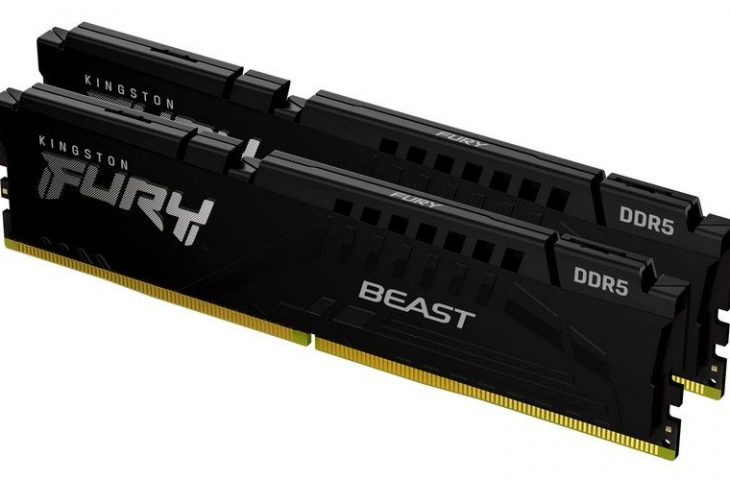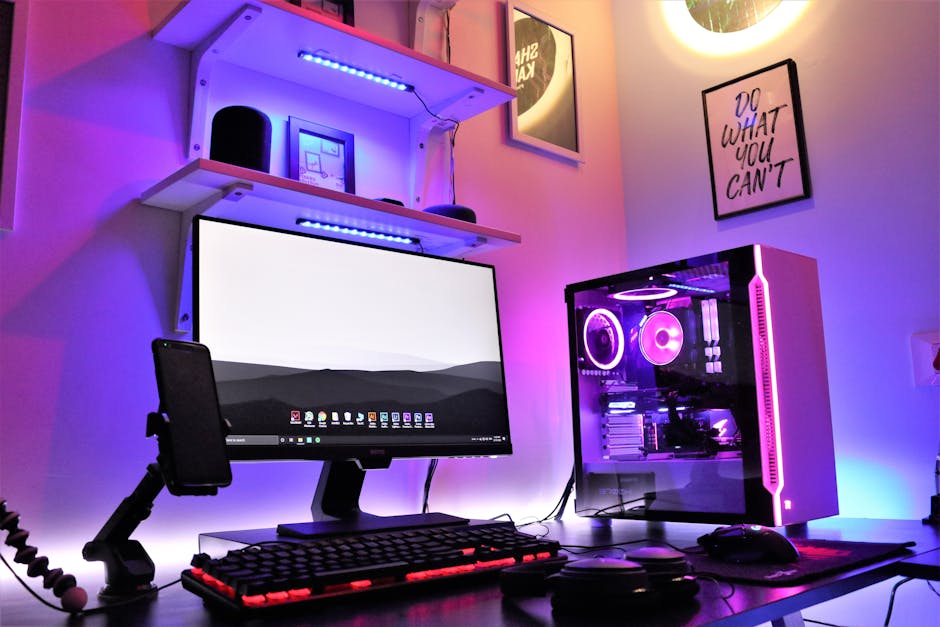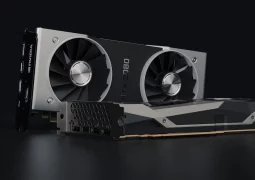Is DDR5 worth it in 2024?
by ago0

Is DDR5 Worth It in 2024?
Introduction to DDR5
DDR (Double Data Rate) RAM has been a cornerstone of computing, revolutionizing memory performance since its inception. With each iteration, DDR RAM has pushed the boundaries of speed and efficiency, shaping the landscape of modern computing. Now, DDR5 emerges as the latest evolution in memory technology, promising a new era of performance and capability.
DDR5 represents a significant leap forward in memory technology, boasting key features and improvements over its predecessors. From enhanced data transfer rates to improved power efficiency, DDR5 sets the stage for a new standard in memory performance.
Evolution of DDR RAM
The journey of DDR RAM began with DDR1, introducing a substantial improvement in data transfer rates compared to its predecessor, SDR (Single Data Rate) RAM. Subsequent iterations, including DDR2, DDR3, and DDR4, continued to refine memory performance, addressing the increasing demands of modern computing applications.
Now, DDR5 stands at the forefront of memory evolution, leveraging technological advancements to redefine memory capabilities. With each iteration, DDR RAM has embraced higher data transfer rates, reduced power consumption, and increased capacity, culminating in the groundbreaking DDR5 standard.
How old is DDR4? When did it come out?
DDR4, which stands for Double Data Rate 4, was officially released in 2014. It represented a significant advancement in memory technology, offering higher module density and lower power consumption compared to its predecessor, DDR3.
Advantages of DDR5
DDR5 brings forth a myriad of advantages that set it apart from its predecessors. With improved data transfer rates, DDR5 accelerates memory performance, catering to the demands of resource-intensive applications. Furthermore, DDR5 addresses the limitations of its predecessors by enhancing power efficiency and providing higher memory densities, unlocking new possibilities for computing systems.
The potential impact of these advantages on computing performance and efficiency cannot be overstated. DDR5’s advancements pave the way for enhanced multitasking, faster data access, and seamless execution of complex workloads, positioning it as a game-changer in memory technology.
What do experts say?
“The advantages of DDR5 memory are significant, especially in terms of performance and power efficiency. With higher data transfer rates and lower voltage requirements, DDR5 offers a substantial improvement over its predecessors. This is particularly beneficial for applications requiring high-speed data processing, such as gaming, AI, and data analytics. Additionally, the increased capacity and bandwidth of DDR5 enable more efficient multitasking and faster data access, leading to enhanced overall system performance.”
– Dr. Lisa Su, President and CEO of Advanced Micro Devices (AMD)
Performance Comparison: DDR4 vs DDR5
When comparing DDR4 and DDR5, the performance disparities become evident. DDR5 boasts significantly higher bandwidth and lower latency, translating to faster data access and processing. Real-world benchmarks demonstrate the tangible performance differences, showcasing DDR5’s prowess in handling data-intensive tasks with remarkable efficiency.
These performance disparities carry profound implications for various computing scenarios, from gaming and content creation to enterprise applications. DDR5’s superior performance metrics lay the foundation for a new standard of responsiveness and productivity in computing environments.

DDR5 in 2024: Market Availability
As of 2024, DDR5 has gained traction in the market, with an increasing number of consumer and enterprise computing devices adopting this cutting-edge memory standard. The projected market availability indicates a steady transition towards DDR5, signaling its growing prominence in the memory landscape.
While DDR5’s pricing and availability may initially pose considerations for adopters, the long-term benefits and performance gains position it as a compelling investment for individuals and organizations seeking to stay ahead in the ever-evolving tech industry.
How much does DDR5 cost?
The cost of DDR5 RAM varies depending on the capacity and speed. As of now, DDR5 RAM modules are generally more expensive than DDR4 due to the newer technology and higher performance. Prices can range from $100 to $300 or more for a single DDR5 RAM module, with higher capacities and faster speeds commanding higher prices.
DDR5 Compatibility and Requirements
DDR5’s compatibility hinges on motherboard support and CPU compatibility, necessitating a thorough evaluation of system requirements before upgrading. While the transition to DDR5 presents challenges, selecting compatible components and ensuring system readiness are pivotal steps in harnessing the full potential of DDR5 memory modules.
Understanding the compatibility requirements and considerations for DDR5 is crucial for users contemplating an upgrade, ensuring a seamless integration of this advanced memory technology into their computing systems.
Overclocking Potential of DDR5
Overclocking DDR5 memory modules unlocks additional performance headroom, empowering users to push the boundaries of memory speed and responsiveness. However, overclocking necessitates a nuanced approach, balancing performance gains with stability and system integrity.
By exploring the overclocking potential of DDR5 and adhering to best practices, users can harness the full capabilities of DDR5 memory, customizing their computing experience to align with their performance requirements.
Is overclocking DDR memory modules safe?
Overclocking DDR memory modules can provide a performance boost, but it also comes with risks. When you overclock DDR memory, you’re essentially pushing it beyond its designed speed, which can lead to instability, data corruption, and even hardware damage if not done carefully.
It’s important to note that overclocking voids the warranty of the memory modules and can also void the warranty of the CPU and motherboard in some cases. Additionally, excessive overclocking can lead to overheating, reducing the lifespan of the components.
While some enthusiasts may find success in overclocking DDR memory modules, it’s crucial to proceed with caution and ensure proper cooling and voltage regulation to minimize the associated risks.
DDR5’s Impact on Gaming and Content Creation
DDR5’s impact on gaming and content creation is profound, elevating the gaming experience with higher frame rates, reduced loading times, and seamless multitasking capabilities. Similarly, content creation tasks such as video editing, 3D rendering, and graphic design benefit from DDR5’s enhanced memory performance, enabling faster rendering and smoother workflow execution.
Real-world examples and case studies underscore the transformative impact of DDR5 on gaming and content creation workflows, positioning it as a catalyst for heightened creativity and productivity.

Future-Proofing with DDR5
Future-proofing a system with DDR5 memory entails embracing a memory standard that aligns with the trajectory of computing advancements. DDR5’s potential longevity and relevance in the rapidly evolving computing landscape offer a compelling case for future-proofing, ensuring that systems remain adept at handling forthcoming hardware and software advancements.
DDR5’s contribution to a system’s resilience against future technological shifts underscores its significance as a forward-looking investment in memory technology.
DDR5 vs Other Emerging Memory Technologies
Comparing DDR5 with emerging memory technologies such as HBM and LPDDR5X reveals the unique advantages and use cases of DDR5 in diverse computing scenarios. DDR5’s distinct performance attributes and compatibility with a wide range of computing devices position it as a versatile and compelling memory solution.
The coexistence or competition between DDR5 and other memory technologies underscores the dynamic landscape of memory innovation, offering users a spectrum of options tailored to their specific performance and application requirements.
Considerations for Upgrading to DDR5
For users considering an upgrade to DDR5, comprehensive considerations encompass performance gains, compatibility, cost, and future upgrade paths. Navigating these considerations with informed decision-making ensures a smooth transition to DDR5-based systems, maximizing the benefits of this advanced memory standard.
Practical advice and recommendations guide users through the upgrade process, empowering them to leverage DDR5’s capabilities effectively within their computing environments.
Conclusion: Is DDR5 Worth It in 2024?
In conclusion, the advent of DDR5 heralds a new era of memory performance, offering a compelling value proposition for individuals and organizations seeking to elevate their computing capabilities. The tangible advantages of DDR5, from enhanced performance to future-proofing potential, position it as a worthy investment in 2024 and beyond.
As DDR5 continues to gain market traction and demonstrate its transformative impact on computing workflows, the considerations for adopting DDR5 align with the pursuit of enhanced productivity, efficiency, and resilience in the ever-evolving tech landscape.


















































